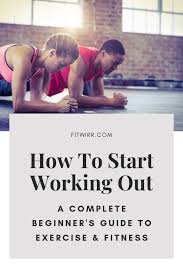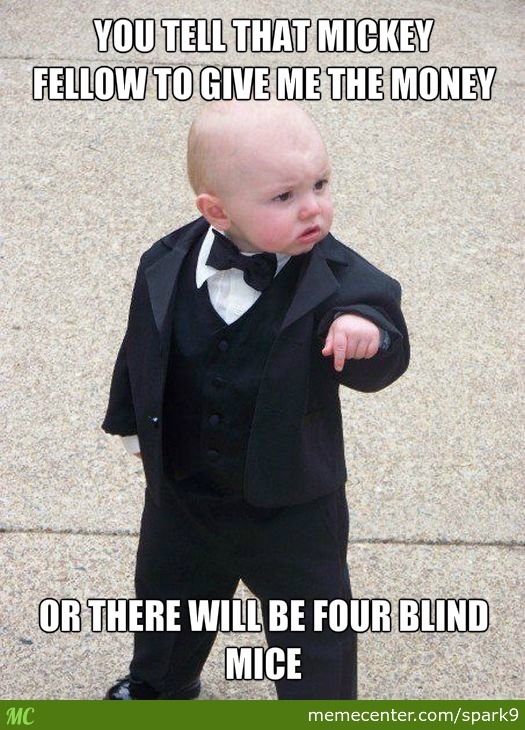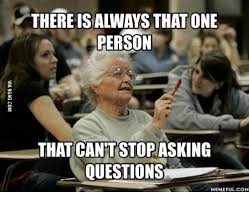Unit One- Personal Choices
| Site: | MoodleHUB.ca 🍁 |
| Course: | CALM |
| Book: | Unit One- Personal Choices |
| Printed by: | Guest user |
| Date: | Friday, 7 November 2025, 5:08 AM |
Table of contents
- 1. Lesson One: Dimensions of Health
- 2. Lesson Two: Positive Practice
- 3. Lesson Three: Eating Habits
- 4. Lesson Four: Exercise Habits
- 5. Lesson Five: Stopping a Bad Habit
- 6. Lesson Six: Communication
- 7. Lesson Seven: Conflict Resolution
- 8. Lesson Eight: Personality Inventory
- 9. Resources
- 10. Assignment
- 11. Conclusion
1. Lesson One: Dimensions of Health
- That different well-being factors work in combination and influence each other
- That changes in one area of your life can affect your well-being
- Possible effects of neglecting or damaging your well-being
Taking care of yourself requires looking after the many different demands of your body and mind to achieve an overall sense of wellness. In this lesson, the readings will help you understand some of the factors involved with well-being.
You will learn some basic information about six factors of well-being: mental, physical, emotional, social, spiritual, and environmental. In this course you will only be examining four areas of well-being. The authors encourage you to consider your spiritual and environmental health independently.
DIMENSIONS OF HEALTH
Your well being is affected by all of the choices you make. In a sense, all of
your choices are personal ones. The extent of well-being in each dimension, as
well as how these dimensions interact with one another affect your overall
well-being.
 |
Spiritual well-being can be one of the most important influences on personal choices and decisions. Beliefs, how you act upon them, and personal ethics are integral to total personal well-being. |
For Your Information: Spiritual Health
Spiritual well-being is difficult to define. It means different things to different people. For some people, spiritual health may come by making time for personal reflection. For others, spiritual health may mean improving the quality of life, not only for themselves but also for others. For many, it is the belief in and worship of the religion of their choice. Belief in religion and participation in its ceremonies and practices offer a sense of security, a sense of purpose and direction, clear values and morals, and a sense of not being alone in the world. As well, religious belief can bring a sense of personal fulfillment and meaning to life that increases a person's overall sense of well-being.
The term "spiritual well-being" refers to the nurturing of life and to the things that give life purpose. Spiritual well-being is affected by those things that guide major life decisions, such as decisions about health and well-being.|
|
Social well-being involves the way you relate to others. It is influenced by many factors including how others treat you, how you interpret this, how you relate to others, how you communicate, and how you establish and maintain relationships. The respect you have for others reflects your social well-being. |
|
|
Physical well-being is often referred to when asking about your health. This dimension of health includes the actual make-up of the body, how it works, and how it is treated by yourself and others. It includes health-related concerns such as diet, exercise, and sleep. |
|
|
Intellectual well-being involves how you think and learn, the information you gather, and how you choose to use this information. It is influenced by what you know and want to know about yourself, all the other information you know and want to learn, your self-confidence related to learning activities, how you choose to learn more, how you choose to use the things you learn, and how to apply information to decisions and choices. |
|
|
Emotional well-being involves your personal thoughts and feelings, and the behaviors related to these. Important influences on this well-being include self-image (the way you see yourself), self-esteem (the way you feel about what you see), what you choose to do about what you see and feel, and the respect you have for yourself in relationships. |
|
|
Environmental well-being involves local and global impacts on your health. |
While it is possible to consider physical, social, psychological, intellectual,
spiritual, environmental, cultural and societal factors of well-being, it is
important to remember that all of these factors work in combination and influence
on another. For example, our feelings about our self can be influenced by the
way we view our relationships with other people. Our physical health can be
influenced by the knowledge we have about what is healthy for us.
Changes in one factor can alter other factors. An environmental danger can
affect our physical well-being. If we strive to change our environment by
moving away or eliminating danger, we will likely find our relationships with
other people will also change. If society creates laws to forbid the
environmental danger, our total well-being may be influenced by that change.
Various factors of well-being can change in importance as issues and concerns
arise. One area of life may be of great importance at some times and then seem
to fade into the background as a new concern comes to our attention. For
example, our relationship with our boss at work may seem less important if our
relationships at home become tense. Or we might ignore good care of our body
when our life gets really pressured and busy; we may stay up all night cramming
for an exam or finishing a tern paper that is due the next day.
Sometimes we only notice that one factor is particularly important when it
seems to be missing or not what we would like it to be. For example, we may not
think about being healthy until we feel sick. We may not worry about what we do
not know until we need some information that we do not have. We may not worry
about the relationships we have in life until we feel unhappy in one of them.
Health Factors You Cannot Entirely Control:
- Heredity
- Genetic traits can make you more prone to certain diseases. Find out about your family history.
- Environment- Pollution is a health hazard that is difficult to control.
- Sex- Some diseases are related to gender. For instance, prostate cancer affects men and ovarian cancer affects women.
- Age- As people age, they recover less quickly.
Health Factors You Can Control
- Diet- Eat sensibly from a variety of food groups. Control your weight.
- Exercise- Keep a healthy heart, lungs, and muscles. This relieves stress, improves the functioning of your body, and helps control weight.
- Rest- Sleep seven to eight hours each night.
- Stress- Physical and emotional problems can be caused by stress, but they can be managed.
- Bad Habits-Avoid smoking, drugs, and alcohol abuse.
- Attitude- A positive outlook on life is a big first step to wellness.
2. Lesson Two: Positive Practice
- That positive thinking can have a beneficial influence on your mind and body
|
"The mind works like a garden. Everyone knows if you plant beans you won't raise potatoes - you will raise beans. Obviously you don't plant a bean to raise a bean - you plant a bean to raise lots of beans. Between planting and harvest there is a tremendous increase in the number of beans. That's the way the mind works. Whatever you plant in the mind is going to come up - multiplied. Plant a negative or a positive and you reap in multiples because between planting and harvest, imagination enters the picture and multiples the result." - Zig Ziglar - See You At the Top, 1975. |
Did you know that having an optimistic attitude actually helps you recover faster from surgery? Studies have shown that people with negative or pessimistic attitudes did not recover as quickly or as well.
Having a positive attitude will help you survive difficult situations and prosper in everyday ones. Although becoming more positive is not an overnight change, it can happen for you, a little bit each day.
 Power of Positive Thinking
Power of Positive Thinking by Remez Sasson
- sourced from successconsciousness.com
When we feel down and worried, we often hear people telling us: "Think positive!" Many do not take these words seriously, as they do not know what the power of positive thinking really is, or do not consider it as useful and effective. How many people do you know that ever stop to think what the power of positive thinking means?
Many do not believe that it works, considering it as just nonsense, and scoff
at people who do.
Among the people who are conversant with this subject, not many know how to use
it effectively in
order to get results. Yet, it seems that more people are becoming attracted to
this subject, as evidenced by the many books, lectures and courses about it. This is a subject
that is gaining popularity.
Thinking positively means admitting into the mind only thoughts, words and
images that are conductive to growth, expansion and success. It is the expectation of good and
favorable results. A positive mind anticipates happiness, joy, health and a successful outcome of
every
situation and action. Whatever the mind expects, it finds.
Allan applied for a new job, but as his self esteem was low, and he considered himself as a failure
and unworthy of success, he was sure that he was not going to get the job. He
had a negative attitude towards himself, and believed that the other applicants were better
and more qualified than him.
Allan manifested this attitude because he was not admitted to most of the jobs he applied to, and consequently had negative past experience. His mind was filled with negative thoughts and fears concerning the job for the whole week before the job interview. He was sure he would be rejected. On the day of the interview he got up late, and to his horror he discovered that the shirt he had planned to wear was dirty, and the other one needed ironing. As it was already too late, he went out with a wrinkled shirt.
During the interview he was tense, displayed a negative attitude, worried about
his shirt, and felt hungry because he did not have enough time to eat breakfast. All this
distracted his mind and made it difficult for him to focus on the interview. His overall behavior made
a bad impression, and
consequently he materialized his fear and did not get the job.
Jim applied for the same job too, but approached the matter in a different way.
He was sure that he was going to get the job. During the week preceding the interview he often
visualized himself making a good impression and getting the job.
In the evening before the interview he prepared the clothes he was going to
wear, and went to sleep a little earlier. On day of the interview he woke up earlier than usual,
and had ample time to eat breakfast, and then to arrive to the interview before the scheduled time.
He got the job because he made a good impression. Of course he had also the proper qualifications for the job, but so had Allan.
What do we learn from these two stories? Is there any magic employed here? No,
it is all natural.
When the attitude is positive we entertain pleasant feelings and constructive
images, and see in our
mind's eye what we really want to happen. This brings brightness to the eyes,
more energy and happiness. The whole being broadcasts good will, happiness and success. Even
the health is affected in a beneficial way. We walk tall and the voice is more powerful. Our
body language shows
the way you feel inside.
All of us affect, whether positively or negatively, the people we meet. This
happens instinctively and on a subconscious level, through thoughts and feelings transference, or through
body language. People sense our aura and are affected by our thoughts.
Is it any wonder that
we want to be
around positive persons and shun negative ones? People are more disposed to
help us if we are
positive. They dislike and avoid anyone broadcasting negativity.
Negative thoughts, words and attitude bring up negative and unhappy moods and
actions. When
the mind is negative, poisons are released into the blood, which cause more
unhappiness and negativity. Negative thinking is the way to failure, frustration and
disappointment.
Positive and negative thinking are both contagious, and their results are very
obvious. If you choose the former you gain a great and beneficial power. In order to turn the
mind towards the
positive, knowledge and training are necessary. People do not change their
attitude and thoughts overnight.
Read about this subject. Meditate about its benefits, and persuade your mind to
try it. The power of
thoughts is a mighty power that is always shaping our lives. This shaping is
usually done subconsciously, but it is possible to make the process a conscious one. Even if
the idea seems
strange, give it a try, as you have nothing to lose, but only to gain. Forget
what others might say or
think about you if you change the way you think.
Always visualize only favorable and beneficial situations. Use positive words
in your inner dialogues or when talking with others. Smile a little more, as this helps to
think positively. If you feel inner resistance when replacing negative thoughts with positive ones, do not
give up, but keep looking only at the beneficial, good and happy thoughts in your mind. Disregard
any feelings of laziness or a desire to quit. If you persevere, you will transform the way your
mind thinks. Once a negative thought enters your mind, you have to be aware of it and
endeavor to replace it with a constructive one. The negative thought will try again to enter your
mind, and then you have to replace it again with a positive one. It is as if there are two pictures in
front of you, and you choose to look at one and disregard the other. Persistence will eventually
teach your mind to think
positively and ignore negative thoughts.
It does not matter what your circumstances are at the present moment. Think
positively, expect only favorable results and situations, and circumstances
will change accordingly. It may take some time for the changes to take place,
but eventually they do.
3. Lesson Three: Eating Habits
- How rest, exercise, diet, and drugs can affect your physical well-being
- That maintaining a healthy and balanced diet will increase your physical well-being
- Some strategies for changing unhealthy behaviours
When somebody has a healthy "diet", it means that they eat a variety of healthy foods. But in this culture when people speak about someone "dieting", it means that a person is restricting or modifying their food intake in order to lose weight. This lesson discusses issues of both healthy eating and dieting.
During adolescence, appropriate nutrition and healthy eating habits are very important because of the rapid physical growth and development that young people experience. Lifestyle, busy school schedules, part-time employment, homework, sports, lessons, and volunteer activities fill your time. Often you end up eating away from home in places such as the school cafeterias, fast-food restaurants, and vending machines. At this stage of your life, it is more challenging but important to maintain healthy eating habits. You need the energy and nutrients from a balanced diet to maintain the level of healthy physical activity that your schedule probably demands.
This lesson has information about creating and maintaining healthy eating habits. It also has information about how to choose a good weight-loss program - not all dieting is created equal!
 Why do you want to change your body mass? The
most important question is “Why should I diet?” not “How can I diet?”
Understand the health bodies come in many shapes and sizes.
Why do you want to change your body mass? The
most important question is “Why should I diet?” not “How can I diet?”
Understand the health bodies come in many shapes and sizes.
The word diet really refers to the collection of foods a person eats but it is a word that has come to mean a special selection of food for some purpose. Most often a person refers to “being on a diet” when attempting to change body size or “lose weight."
Many Canadians want to change their body shape. And many Canadians are
overweight. Being overweight is more than an issue of appearance; many
overweight individuals are at higher risk of suffering from heart disease,
diabetes, increased blood pressure, and some forms of cancer and arthritis.
The body uses energy when it is active; it gets energy from food. These two facts form the basis for a change in body shape. Reducing body mass is successful only when the body uses more energy than it takes in. There is then no excess energy to store in the body as fat.
So what do you do if you want to reduce your mass for a healthier body?
Obviously there are two actions you must take - reduce the energy you take in
and use more body energy.
You can select foods that offer lots of nutrients but are low in sugar and fat.
Watch out for “empty foods” which provide the body with lots of energy but
offer little in the way of nutrients. Empty foods include soft drinks, candy,
and many fried snack foods. Substitute nutritious foods for these empty ones.
There are some problems with existing on a low energy diet. First of all, your
body thinks it is starving and the rate at which you use energy, your metabolic
rate, slows down as your body tries to use energy more efficiently. This can be
frustrating for the person who does not want to use energy more efficiently but
rather wants to use up excess energy. Exercise will counteract this a bit
because it raises the metabolic rate during and for a while after the activity.
Equally important is increasing amount of energy you use. If you reduce the
amount of energy you take but do not exercise, your body loses muscle tissue as
well as fat. If you exercise, you will develop a tone muscles. As muscles use
mc energy than fat, simply to maintain themselves, having more muscle w help
your body to burn energy. And you will be more fit.
Any activity will consume energy. Walking, jogging, running, swimming, cycling,
and doing any active sport are just a few examples physical activities which
use energy.
The benefit of combining a go eating strategy with physical exercise is that
your metabolic rate increases when you exercise so you use mc energy. And this
increased metabolic rate lasts for several hours after t activity so the
effects last beyond t time of the actual exercise. And there are lots of other
healthy reasons build regular physical activity in your day.
Dieting has become big business. Diet programs and fitness clubs that sell the
idea of losing weight are making money from your interest changing your shape.
There are weight loss products, plans and pr grams and many of them do n work.
Body wraps, belts, and sweat suits cause only water, not fat loss. Diet drugs
that you can buy a not effective in the long term and cause a rise in blood pressure.
Liquid diets can be extremely dangerous and require close medical supervision.
And the weight lost on a liquid diet is usually regained over time because new
eating habits have not been learned. Also there is nothing special about
cellulite, a word created to de scribe one form of body fat. It cannot be
rubbed away; it does not respond to special treatment.
Are you considering “going on a diet”? The best diet is one that you can live
with all your life. It should stress good eating habits and allow reasonable
food choices and amounts so that you can follow it without feeling hungry or
robbed of food. If you are “going on a diet”, be sure that it is one that is
not damaging to your health. Check the diet out and use it only if it:
• allows a wide variety of foods. Do not choose a plan or program that focuses
on one or a couple of foods (like a grapefruit and egg diet) or suggests that
some foods can dissolve fat (they can’t) or have some magical quality.
• provides enough nutrients from food sources. You need to get nutrients from
food, not supplements, drugs, powders or other non-food items.
• teaches you to eat real foods sensibly. Learning how to eat sensibly lets you
stop dieting and not regain mass. It can lead to lifelong change.
• encourages exercise and physical activity. The other half of losing weight is
in the physical activities you do.
Be aware of the diet trap. When you repeatedly go on and off “diets” you are
likely to suffer the consequences of yo-yo” dieting. This on- again off-again
attempt to control body mass causes your body to lower its metabolic rate and
may make weight loss more difficult each time you try it.
The only really good diet is a lifelong plan for eating well. Short term diets
are not as effective as a lifelong healthy eating style.
The only way to reduce
your body mass is to:
• change your eating behaviors permanently
• use more energy than you consume
• combine sensible eating habits and regular physical activity.

Experts agree the key to healthy eating is the time-tested
advice of balance, variety and moderation. In short, that means eating a wide
variety of foods without getting too many calories or too much of any one
nutrient. These 10 tips can help you follow that advice while still enjoying
the foods you eat. 1. Eat a variety of
nutrient-rich foods. You need more than 40
different nutrients for good health, and no single food supplies them all. Your
daily food selection should include bread and other whole-grain products;
fruits; vegetables; dairy products; and meat, poultry, fish and other protein
foods. How much you should eat depends on your calorie needs. 2. Enjoy
plenty of whole grains, fruits and vegetables. Surveys show most Americans don't eat enough of these foods.
Do you eat 6-11 servings from the bread, rice, cereal and pasta group, 3
of which should be whole grains? Do you eat 2-4 servings of fruit and 3-5
servings of vegetables? If you don't enjoy some of these at first, give
them another chance. Look through cookbooks for tasty ways to prepare
unfamiliar foods. 3. Maintain
a healthy weight. The weight that's right for
you depends on many factors including your sex, height, age and heredity.
Excess body fat increases your chances for high blood pressure, heart
disease, stroke, diabetes, some types of cancer and other illnesses. But
being too thin can increase your risk for osteoporosis, menstrual
irregularities and other health problems. If you're constantly losing and
regaining weight, a registered dietitian can help you develop sensible
eating habits for successful weight management. Regular exercise is also
important to maintaining a healthy weight. 4. Eat
moderate portions. If you keep portion sizes
reasonable, it's easier to eat the foods you want and stay healthy. Did
you know the recommended serving of cooked meat is 3 ounces, similar in
size to a deck of playing cards? A medium piece of fruit is 1 serving and
a cup of pasta equals 2 servings. A pint of ice cream contains 4 servings.
Refer to the Food Guide Pyramid for information on recommended serving
sizes. 5. Eat
regular meals. Skipping meals can lead to
out-of-control hunger, often resulting in overeating. When you're very
hungry, it's also tempting to forget about good nutrition. Snacking
between meals can help curb hunger, but don't eat so much that your snack
becomes an entire meal. 6. Reduce,
don't eliminate certain foods. Most people
eat for pleasure as well as nutrition. If your favorite foods are high in
fat, salt or sugar, the key is moderating how much of these foods you eat
and how often you eat them. 7. Identify major sources of these ingredients in your diet and make changes,
if necessary. Adults who eat high-fat meats or whole-milk dairy products
at every meal are probably eating too much fat. Use the Nutrition Facts
panel on the food label to help balance your choices. 8. Choosing skim or low-fat dairy products and lean cuts of meat such as
flank steak and beef round can reduce fat intake significantly. If you love fried chicken, however, you don't have to give it up. Just eat
it less often. When dining out, share it with a friend, ask for a
take-home bag or a smaller portion. 9. Balance
your food choices over time. Not every food
has to be "perfect." When eating a food high in fat, salt or
sugar, select other foods that are low in these ingredients. If you miss
out on any food group one day, make up for it the next. Your food choices
over several days should fit together into a healthy pattern. 10. Know
your diet pitfalls. To improve your eating
habits, you first have to know what's wrong with them. Write down
everything you eat for three days. Then check your list according to the
rest of these tips. Do you add a lot of butter, creamy sauces or salad
dressings? Rather than eliminating these foods, just cut back your
portions. Are you getting enough fruits and vegetables? If not, you may be
missing out on vital nutrients. Make
changes gradually. Just as there are no
"superfoods" or easy answers to a healthy diet, don't expect to
totally revamp your eating habits overnight. Changing too much, too fast
can get in the way of success. Begin to remedy excesses or deficiencies
with modest changes that can add up to positive, lifelong eating habits.
For instance, if you don't like the taste of skim milk, try low-fat.
Eventually you may find you like skim, too. Remember,
foods are not good or bad. Select foods based
on your total eating patterns, not whether any individual food is
"good" or "bad." Don't feel guilty if you love foods
such as apple pie, potato chips, candy bars or ice cream. Eat them in
moderation, and choose other foods to provide the balance and variety that
are vital to good health.
With so much information available about the effects of dietary fat on health, understanding the role fat plays in a well-balanced diet can be pretty confusing. To cut through the confusion, it's important to remember that fat is an essential nutrient that everyone needs to stay healthy.
Fat is a valuable energy source and carries fat-soluble vitamins needed for proper growth and development. It also contributes important taste and textural qualities that are part of enjoying food.
Too much fat, however, can increase the risk of heart disease, obesity and other health problems. When moderating fat intake, it's important to consider these points:
- Health authorities recommend Canadians consume 30 percent or less of their total daily calories from fat, with 10 percent or less of those calories from saturated fat. Remember, the 30 percent refers to your total fat intake over time, not single foods or meals. Use the following chart to guide your fat intake.
- If you eat
this Total fat Total saturated
number of calories per day fat per day
per day: (grams) (grams)
1,600 53 or less 18 or less
2,000 65 or less 20 or less
2,200 73 or less 24 or less
2,500 80 or less 25 or less - Use the Nutrition Facts panel on the food label to help determine how much fat is in foods. Remember, it's the total fat intake over time that's important. A food high in fat can be part of a healthy diet as long as it's balanced with other lower-fat food choices.
- All fats are a combination of saturated, polyunsaturated and monounsaturated fatty acids. Each of these types of fats have different effects on the body, but all contain nine calories per gram.
- Blood cholesterol levels are influenced by family history, weight, age, smoking, physical activity and eating habits. Studies have shown that diets which are too high in certain saturated fatty acids and dietary cholesterol can raise blood cholesterol.
The Food Guide is a practical tool to help you make food choices that are consistent with the Dietary Guidelines for Americans. Using the Food Guide enables you to eat a variety of foods daily so that you can get the nutrients you need.
The following amounts count as a serving.
- Food Group--Serving Size
- Bread--1 slice bread, 1\2 bagel or English muffin, 1 ounce ready-to-eat cereal, 1\2 cup cooked cereal, rice or pasta, or 5-6 small crackers
- Vegetable--1 cup raw, leafy vegetables, 1\2 cup cooked or chopped raw vegetables or 3\4 cup vegetable juice
- Fruit--1 medium piece of fruit, 1\2 cup mixed fruit or 3\4 cup fruit juice
- Milk--1 cup milk or yogurt, 11\2 ounces natural cheese or 2 ounces process cheese
- Meat--2 - 3 ounces cooked lean meat, poultry or fish (about the size of a deck of cards)

4. Lesson Four: Exercise Habits
|
|
Making physical activity an integral part of your day is important regardless of your age. Physical activity contributes to your physical well-being and helps to develop a healthy body, maintain weight, and reduce feelings of anxiety and depression. Your benefits will increase as you add activity to your day. And, physical activity is easy to do with many fun things to choose from. Read on to find out more.
Tuning up your body with physical activity helps you to:
- Build strong bones and strengthen muscles
- Maintain flexibility
- Achieve a healthy weight
- Promote good posture and balance
- Improve fitness
- Meet new friends
- Strengthen the heart
- Improve physical self-esteem
- Increase relaxation
- Promote health growth and development
- Look and feel your best by cranking up your activity level
Get Active Your Way Every Day - For Life!
It's Easier Than You Think!
You can do it - here's why
Did you know that 63% of Canadians - just like you - are not active enough to achieve the health benefits they need from physical activity?
Your body is designed to move and it's surprising how little time it takes to stay healthy and reduce the risk of disease if you are physically active, regularly.
Consider this: you're awake about 15-19 hours a day, but you only have to be active for ONE HOUR and that 60 minutes of activity doesn't have to be done all at once. You can add up your activities, 10 minutes at a time, to get that daily total. It's easy to take a first step and that counts as progress when you're getting started.
Add up your activities during the day in periods of at least 10 minutes each. Start slowly...and build up! If you are already doing some light activities, move up to more moderate ones. A little is good, but more is even better, if you want to achieve health benefits.
WORKING SMART-WORKING
OUT
Do you work out? Lots of people build physical activity into their day by
working out, purposefully setting aside time to exercise their bodies. And the
life of a student can be pretty sedentary, filled with activities that require
little physical energy, so building time for physical activity into your day is
really important.
What Exercise Can Do:
As well as the benefits to the muscular and cardiovascular systems, some
activities help strengthen bone. Running, walking, and skip ping are just a few
weight-bearing activities which require you to carry your body weight while you
move. Minerals are being deposited into the bones and their density in creases,
or more accurately does not decrease at the rate it would without this type of
activity.
What Exercise Can’t Do:
You cannot “spot reduce”, that is reduce an area of your body or get rid of one
area of excess fat stores. But exercise will tone muscles in specific areas,
and firm your body. And exercise does use energy.
A smart workout is an activity for which you have prepared yourself. If you
have not been very active for a while, a 10-km run (or any other in tense
activity) is the fastest way to damage your body and convince your self that
physical fitness is not for you. So begin by choosing a reason able activity.
If you want to be able to run 10 km, work your way up to it.
Choose an activity you like. You are more likely to repeat the experience if you enjoyed it. You can combine your activity time with an opportunity to visit friends. Many people jog, play tennis, walk, cycle, swim or play team sports because they have friends who like to do the same activity.
Choose an activity that fits into your budget, something you can afford. For example, downhill skiing involves a much greater expenditure than walking. If your only fit ness experience costs a great deal, you are likely to do it less. You may only go skiing once or twice a year but be able to walk every other day.
Choose a time of day that is best for you and try to focus that time on getting some exercise. Of course, there are times when you will need to shift your routine to meet the demands of your day. Be flexible about it when you have to be but remember that some people find it easier to fit physical activity into their lives when they have a set routine.
Exercise restraint when you exercise your body. Pushing yourself too hard or too fast can cause injury and lessen your desire to repeat the activity.There is no exercise or activity that is perfect for everyone.
Choose those that are good for you. You will be more likely to make them part of your lifestyle.
Warming Up
Begin a workout by doing a gradual warm-up. This prepares your body for the
strenuous activity to come. One of the best ways to warm-up is to do a less
strenuous version of the activity you are about to do. Swim a couple of gentle
laps, walk and then jog lightly in place, or stretch and bend before beginning
the activity you have chosen. This type of warm-up pre pares your body by
increasing your heart
rate and sending an increased blood flow to the muscles that will be working
out. Stop and stretch to complete the warm-up.
Remember to drink water before and after a workout as well as during a break. You may not feel thirsty but your body needs to replace the fluids lost during exercise. Also it is best to wait a couple of hours after a meal before starting a strenuous workout.
Begin your workout. If your focus is the cardiovascular system, you will perform son ask, such as running, aerobic ex e, cycling, skipping, or jogging to reach your target heart rate. Your goal may be 20 to 30 minutes of work at your target heart rate but in order to do this you may have to work up to that level. Start by doing a couple of minutes of strenuous work, slowing down for a working rest, and then increasing your heart rate again for a couple of minutes. Do this through your workout.
Over the next few workouts in crease the time of strenuous work and lessen the resting time.
Remember to check your pulse and say a few sentences. This will help you to determine the level of work you are doing. You should be able to speak, likely in small sentences and breathlessly, but so that you can be understood. If you are working so hard that you cannot speak, decrease your effort. Avoid the temptation to increase your workouts too quickly; a 10% increase each week is more than enough. Eventually you will reach your goal.
It is important to remember to breathe while you exercise. While this may sound strange, some people hold their breath while strenuously working. The body needs oxygen while exercising and holding one’s breath can cause damage.
Cooling Down
After you have finished the strenuous part of your workout, you need to do a
cool-down before you stop completely. Continue the activity you are doing but
at a slower pace for several minutes. These gentle repetitions will allow your
muscles to relax while circulating blood through them. This is a good time to
do a bit more stretching.
You should try to work out two to three times a week for 20 to 30 minutes each
time. This allows your muscles and cardiovascular system to develop
efficiently.
Adding Variety
If you find your present workout boring or would like to experiment with a new
activity, try cross-training. This means varying the activities you choose for
your workouts. A variety of activities also allows you to choose an activity
which fits into your schedule for the day rather than eliminating it. As, well,
if you choose different types of activities, you will work on different sets of
muscles and your overall fitness level will improve.
 I don’t have time today.
I don’t have time today.Don’t try to cram physical activity into an already busy day. Take a relaxing walk before bed. Fit little activities, like walking up stairs, into your busy schedule. And make time for yourself tomorrow.
 I never have enough time.
I never have enough time.
If time is your regular excuse (and it is a commonly used reason for not
exercising) then it is time to make a new schedule for yourself. Just as you
wouldn’t go for a week without eating, neither should you miss out on regular
physical activity. Even an hour three days a week is a good start.
 It’s boring.
It’s boring.
Then find a new activity. There are so many things you can do that you
shouldn’t get trapped into one routine. Vary what you do from day to day. Do
some activities with friends and some by yourself.
 I don’t know how.
I don’t know how.
Find out from someone who knows. Your physical education teachers, community
class instructors, the YMCA and YWCA, and other trained activity leaders can
help you. Now is the time to learn.

It costs too much.
If your physical activities are expensive, try switching or alternating with
less costly forms of exercise. Walking, jogging, skipping and even swimming in
the community pool are inexpensive.

I don’t have anyone to go with.
First of all, are you really sure that there is no one to keep you company? Try
asking a friend to go walking, jogging, swimming or skating with you. Get a few
friends together and make it a group activity. (A great way to group date!) And
remember that doing some-thing active together is a good way to spend time with
members of the family. A walk can be a good time to talk.
If you can’t find someone to keep you company in an activity, find people who
are already having fun being active. Join a club, sign up for a community
league team, attend a community activity evening, take lessons, participate in
noon hour sports at school; these are all ways to get active with a group of
people who are doing the same thing.

I used to exercise but now...
If you burned out on exercise by overdoing it, find something different to try
at a more relaxed pace.
I don’t want to get sweaty, mess my hair, break my nails, etc. etc. etc.
Keep in mind that physical activity, a good work-out, can make you feel better
and appreciate how good you look. However, there are lots of activities that
will not take
a toll on your appearance (just take a quick look “67 Ways to Get Physical” in
this book). And for some activities, like dancing, you may want to look your
best!

It hurts.
Physical fitness that is good for you should not be painful. Listen to your
body; if something hurts, slow your pace or stop. You should be able to talk
while you are exercising. If you can’t, you are probably pushing yourself
beyond a reasonable healthy level of activity.

I’m under a lot of pressure right now.
Then now is the time you need some physical activity, perhaps something that is relaxing, to relieve stress and anxiety. During heavy studying and exam times, quick breaks for some exercise can really refresh you.
5. Lesson Five: Stopping a Bad Habit
- How rest, exercise, diet, and drugs can affect your physical well-being
- Some strategies for changing unhealthy behaviours
- How to develop a plan for changing an unhealthy behaviour

Changing a habit can be difficult. Habits are deeply entrenched behaviours that we reinforce through repetition and that bring us some measure of satisfaction or happiness. Some habits can be destructive to our health and happiness, such as smoking, binge drinking, over-eating, or doing drugs. Sometimes a habit can become an addiction; when this occurs, we lose control and become a slave to the behaviour.
Although difficult, habits CAN be changed. You can gain greater control over your life by changing or eliminating the habit. In this lesson, we will focus on smoking - a bad habit and a terrible addiction for many teens. Please note, though, that the first reading addresses stopping a habit in general.
If you are not a smoker, there are still important characteristics to learn in these readings. See if you can discover what kinds of behaviours, attitudes, and thoughts are necessary to stop a habit. Remember that in a following assignment you will be asked to think about stopping a bad habit - whether it is smoking, nail biting, procrastinating, binge drinking, unhealthy snacking... or many other options.
Article taken from:
1 The 5 tips come from an article called,
"Things Needed to Make Change in Your Life", by Denis R. Tesdell,
http://www.coachdt.com.
that is physically harmful, such as smoking, doing drugs, or eating unhealthy foods or a habit that is mentally or
socially harmful, such as nail biting, nose picking, or procrastinating, change can improve your overall wellbeing.
The more difficult habits to stop are those that will "be good" for
us in the end, but that are difficult to do. We can
think of many compelling reasons to keep the habit – it feels good, it makes us
less self-conscious, it calms us, it is easier to keep going.... But some habits need to be changed, and changed
permanently, especially when they hurt our wellbeing.
What is involved in stopping a habit – permanently?
1. The deep desire to change. If you are not unhappy or revved up enough to
change; any attempt you make will
probably fall short.
2. Wanting to change for yourself and not for others. Unless and until you want
to make a change for yourself
and not because it might please your friends, parents, teachers, society, etc.,
the chances of being able to do it
are not favourable.
3. A vision of what things (you) will be like after you have successfully made
the change. You might not be right,
but having a positive vision of how things will be different is often very
helpful. It plants positive "seeds" in the
subconscious.
4. Tenacity. Change is often difficult and takes time. Making changes can be
like a roller coaster ride, with ups and downs. "Hanging in there" when the going
gets rough is
important.
5. A support system. Any difficult or major change is helped if a person has a
"support system" of some kind. The support system can be family, friends, work colleagues, a support group,
etc. The important thing is that they know what it is you want to change, and that they are positive and
supportive of you all the way, even if you "stumble" along the way. A coach, a pastor, or a doctor can also be
good support people, especially if the changes involve personal development, health issues, or major life shifts or
transitions.
Stopping a habit.
It doesn't have to be difficult, frightening or take forever.
Aside from the changes we all make without any conscious effort, the conscious desire to change a habit can be
empowering and exciting. When it is completed, getting rid of the habit will help you improve your self-esteem,
self-respect, courage, integrity, and much more!
If you smoke, we bet you’ve already thought about quitting.
This quiz can help pinpoint the reasons why you smoke, an
important first step, since quitting will be easier if you substitute healthful
ways to satisfy those needs. For example, if this test indicates that you smoke
to relax, you’ll want to try other ways to calm down, such as meditation or
stretching exercises.
Rate yourself on each statement using the following scale:
 5. Always
5. Always
4. Frequently
3. Occasionally
2. Seldom
1. Never
(A ) I smoke
cigarettes to keep myself from slowing down Scoring 1. Enter the number you wrote
between each lettered statement in the spaces below. 2. Add the scores to get your
total for each factor. A
(B ) Handling a cigarette is part of the enjoyment of smoking
(C ) Smoking cigarettes is pleasant and relaxing
(D ) I light up a cigarette when I feel angry
(E ) When I run out of cigarettes, it feels almost unbearable
(F ) I smoke cigarettes automatically, without even being aware of them
(G ) I smoke cigarettes when I’m hungry and I want something in my mouth/need
something to do
(H ) I smoke cigarettes for stimulation
(I ) I enjoy the steps I take to light up
(J ) I find cigarettes satisfying
(K ) When I feel uncomfortable or upset about something, I light up a
cigarette.
(L ) When I’m not smoking a cigarette, I’m very much aware of its absence
(M ) I light up without realizing I still have one burning in the ashtray.
(N ) I smoke cigarettes to keep my weight down
(O ) I smoke cigarettes to get a lift
(P ) When I smoke, part of the enjoyment is watching the smoke as I
exhale
(Q ) I want a cigarette most when I’m comfortable and relaxed
(R ) When I feel blue or want to take my mind off cares and worries, I smoke
(S ) I get a real gnawing hunger for a cigarette when I haven’t smoked for a
while
(T ) I’ve found a cigarette in my mouth and not remembered putting it
there.
(U ) I have a cigarette instead of dessert or a second helping of the main
course. + H
+ O
= Stimulation
B + I
+ P
= Handling
C + J
+ Q
= To feel good
D + K
+ R
= To stop feeling bad
E + L
+ S
= Addiction
F + M
+T
= Habit
G + N
+ U
=To avoid eating
What Your
Scores Mean Stimulation Handling To Feel Good
If you get real pleasure out of smoking, try substituting hobbies and social or
physical activities you enjoy. To Stop
Feeling Bad Addiction Habit To Avoid
Eating WEED
OUT THE NEED FOR NICOTINE Although tobacco has been around for centuries, its popularity has varied over
the years. These days, with the health risks of smoking so much in the news,
more and more people are trying to quit. Unfortunately, deciding to quit is not
always enough to make it happen. Many people who re ally want to quit find
themselves un able to. Failure often occurs because people do not realize that
smoking can be a physical addiction as well as a habit. Luckily there are
several products available now to help smokers break the addiction. Physical Effects Nicotine Replacement Therapy
People, who smoke more than 30 cigarettes a day, smoke first thing in the morning
or wake in the night to smoke will need either prescription strength nicotine
gum or the nicotine patch. Nicotine patches are the newest product on the
market to help people quit smoking. Most patients start with the 21 mg strength
patch. People who smoke less than 20 cigarettes a day or weigh less than 100
pounds may start with the 14 mg patch. TIPS TO HELP
YOU STOP SMOKING
• Get rid of all your cigarettes. Clean out every ashtray in your home and car.
Discard your matches and lighter.
If you smoke to get energized, find an alternative energy source, whenever you
feel the urge to smoke.
There are many ways to keep your hands busy without lighting or playing with a
cigarette. Why not toy with a pen, a coin, a piece of jewelry, worry beads or
some other harmless object?
This kind of smoker may find it easy to quit when everything is going well, but
may be tempted to start again in a time of crisis. Again, physical exertion and
social activities may be useful alternatives.
If you scored high on this factor, tapering off may not work for you, because
your body starts craving another cigarette the moment you put one out. Addicted
smokers often have to go cold turkey. You may find it helpful to smoke more
than usual for a day or two so that your taste for cigarettes is spoiled; then
isolate yourself completely from cigarettes until the craving is gone. Giving
up cigarettes with this technique may cause so much discomfort that you’ll
resist the temptation to start again, because you know you’d have to go through
the same agony again.
The key to success here is to make yourself aware of each cigarette you smoke.
This can be done by asking yourself, “Do I really want this cigarette?” You may
be surprised at how often the answer is “no”.
Research shows that smoking does increase your metabolic rate (the rate at
which calories are consumed to pro vide energy). This fact partly explains why
smokers who quit gain weight, and why smokers are often thinner than
non-smokers. But smoking is not a good way to stay thin: It can cause cancer,
and is also a factor in heart disease and premature aging. Instead, start an exercise
program when you quit; the activity will burn up the extra calories smoking
used to consume. Since stopping smoking can also increase your interest in
food, you may be tempted to overeat. Keep lots of low-calorie snacks, such as
plain popcorn or raw veggies, on hand, and don’t try to quit around the
holidays, when high-calorie food and drink abound.
By Tracey L. Marsden, B.Sc. (Pharm), a community pharmacist in Calgary, Alberta
The physical addiction to smoking comes from the nicotine in tobacco. Nicotine
gives smokers a feeling of calm when they are anxious and energy when they are
tired. Over time, the body gets used to the nicotine and, when the supply
stops, the body goes into withdrawal. The result can be irritability,
restlessness, trouble concentrating, fatigue, weight gain, dizziness and
headaches.
Nicotine can also cause some drugs to pass through the body more quickly. This
means that a person who quits smoking might end up with higher levels of some
drugs in the body than were there when they smoked. For this reason, the doctor
and pharmacist should be told when a person plans to quit smoking.
Psychological Effects
The “habit” of smoking is a psycho logical addiction. A person who smokes a
package of cigarettes a day repeats the hand to mouth ritual more than 90,000
times in one year. This is a powerful reinforcement of the habit.
Smoking is also reinforced by social situations. Most smokers have specific
times when they want a cigarette, such as after meals or at parties. For many,
smoking becomes a part of the daily routine. To break the habit, smokers need
to make some lifestyle changes. Learning ways to relax, in creasing physical
activity, avoiding situations that trigger the desire to smoke and being aware
of how cigarettes fit into the daily routine can all help smokers break the
social and psychological addiction to tobacco.
Techniques for Quitting
Anyone who wants to quit smoking must make a definite plan. Setting a specific
day as the QUIT SMOKING day is a good first step. It may be helpful to have
other family members or coworkers stop at the same tin (the more the better!).
Quit-smoking programs or support groups can be extremely useful. Statistics
show that people on the nicotine patch who also attend such programs are twice
as successful quitting as those on the patch alone. Quit-smoking programs can
he smokers make the lifestyle change they need to make to become non smokers.
They are an important pa of breaking the habit part of smoking. Doctors or
hospitals should have information about local smoking cessation programs.
To break the physical addiction, smokers may benefit from nicotine replacement
therapy. Doctors can prescribe nicotine in gum or patch form to he patients
through physical withdraw Nicotine gum has recently become available without a
prescription.
It is important that the doctor pharmacist be consulted about using the gum. It
is not the solution for smokers. People who smoke less than 20 cigarettes per
day and can wait 30 minutes before smoking their first cigarette of the day may
not need any form of nicotine replacement. Those who smoke 20 to 30 cigarettes
per day and smoke the first cigarette within 30 minutes of waking will probably
benefit from the non-prescription nicotine gum.
Those who decide to try the nicotine gum should be aware of several things.
First, it is not to be chewed like regular gum. The piece should be chewed two
or three times, then rested between the cheek and gums for one minute. This
rest and bite routine gives an effect similar to pulling on a cigarette. A
piece should be chewed whenever there is a desire to smoke. Most people use
about 10 pieces per day. This number should be decreased gradually over three
months or so.
The patient should avoid drinking anything while the nicotine gum is in the
mouth, since this can prevent the gum from working properly. Hiccups,
lightheadedness and throat irritation are all signs that the gum is being
chewed too quickly or too roughly.Nausea, gas and mouth ulcers may occur with the use of the nicotine gum. Other
non-prescription products have not proven effective in helping smokers quit.
The patches release nicotine through the skin and into the blood stream. After
the patch has been re moved, there will still be nicotine left in the skin that
will continue to be re leased into the blood. Therefore it is important not
only to avoid smoking while on the patch but also for several hours after it is
removed. A few deaths have occurred in patients who continue to smoke while
using the nicotine patch.
Nicotine patches must NEVER be cut in half or otherwise altered. Cutting the
patch affects the rate of nicotine delivery and can result in a complete loss
of nicotine from the patch. A cut patch will be of no benefit to the patient.
As with all drugs, the nicotine patch has some side effects. These can include
some itching, burning or tingling for the first hour or so after the patch is
applied. When the patch is removed, the skin might look red but this usually
goes away in a day or two. If the skin underneath is swollen or very red or if
a rash develops, the patch should be removed and the doctor notified. Some
patients have reported vivid dreams or trouble sleeping while on the nicotine
patch. If this causes concern, the doctor should be told.
The instructions for use should be read through completely before starting on
the nicotine patch. All manufacturers have excellent booklets that give helpful
hints on breaking the habit as well as step by step directions for applying the
patch.
A Challenge worth Pursuing
Giving up tobacco may be one of life’s greatest challenges. Fortunately,
nicotine gum and patches are helping thousands of Canadians to take the
challenge. Nicotine replacement, together with a quit-smoking program and a
sincere desire to quit, are all key elements in creating a NO SMOKING recipe
for success.
• Take deep breaths whenever you feel the urge to smoke. Hold your breath for
ten seconds, and then release it slowly. Taking deep, rhythmic breaths is not
unlike smoking - except that you inhale clean air, not poisonous gases.
• Exercise to help relieve tension. Walk instead of riding whenever possible.
Take a brief stroll after meals, rather than taking a cigarette. This added
exercise will have the additional benefit of helping you lose a few pounds a
month.
• Think of any negative image you associate with smoking when you feel tempted.
Select your worst memory connected with smoking - like the time you were left
completely breathless after running for a bus. Then think of the positive
aspects of quitting; you’ll be able to run farther, your singing voice will
improve.
• Reward yourself with oral substitutes for cigarettes. Some good, healthful
examples are sugarless gum, lemon drops, carrot sticks, apples slices, and
unbuttered popcorn.
• Eat three meals a day. This habit, which many people neglect, maintains blood
sugar levels - and curbs the urge to smoke.
• Scramble up your day to change habits connected with smoking. Leave the
“scene of an urge” immediately. At home, avoid your “smoking chair” after
dinner. Reach for gum, rather than a cigarette, when you answer the phone.
• Keep your hands - and mind - busy. Work on a crossword puzzle. Knit, play
with a toy. Clean your room, shampoo the dog, weed the garden.
• Spend time with friends who don’t smoke. Visit places where smoking is
prohibited - a library, theater or museum. Always watch movies from the “no
smoking” section.
• Brush your teeth several times a day to get rid of smoker’s breath.
• Go public with your plans to quit. Ask your family and friends to help keep
you from backsliding. Ask family and co workers not to smoke around you.
• Spend the money you save by not smoking.
• Treat your body and soul with kindness. Indulge in a bath, massage, or a nap.
Listen to your favorite music. Appreciate the fact that you don’t need a
cigarette to have a good time.
6. Lesson Six: Communication
- how to communicate positively
- that the way you communicate indicates your level of respect for others and for yourself

To live is to communicate! Communication is the foundation for all interpersonal relationships, and our daily lives are filled with one communication experience after another. Through communication we reach some understanding of each other, learn to like, influence, and trust each other, begin and end relationships, and learn more about ourselves and how others perceive us. Through communication we learn to understand others as individuals and we help others to understand us.
Yet to achieve these benefits, we need skills of communicating effectively in all of our relationships. This lesson gives you some strategies for being a good communicator.
The gift of hearing is truly a precious one. Just ask people who suffer from hearing impairment or loss. They can
tell you of the countless important sounds great and small that they cannot hear properly or cannot hear at all. The word “hearing” relates closely to the word “listening.” But they do they mean the same thing? If you can hear well can you listen well? Basically the answer is “yes.” But a key term in this question is “can you?’
Let’s try another
question. If you can hear well, do you listen well? This becomes a bit more interesting.
If you belong to the majority of people and answer honestly, you answer will be
“no.” When we really stop to think about it, we know that listening and hearing are not necessarily the same thing. Try a little experiment. Stop
reading for a minute or so. During this time write down a list of all the
sounds you can hear. Listen for sounds you might not normally be aware.
Listen…!
People may grow
accustomed to the weirdest of noises, especially if those noises follow an
identifiable pattern. So you find Jane saying about her husband, George, “He
can sleep through anything!” In fact, of course, even if you do sleep through
loud or irritating noises, those noises may still be getting through to you.
But you may register them in your dreams or in changes in your brain wave
patterns. In other words, you may hear those things at non-conscious levels of
brain activity. Our bodies respond naturally at times to outside noises. Did
you know, for instance, that your finger swells measurably when you hear a loud
sound? Theoretically, an
ultra sonic sound generator can be rigged up that could produce sound that could kill you, or at least cause a lot of destruction. And you wouldn’t
hear a thing! Often, we may find
ourselves saying, “I can’t cope. It’s too much!” This is what Marshall McLuhan
meant when he referred to the “implosion effect” of our electronic media. These
media, whether in the form of telephones, radios, public address systems,
television networks, or holographic transmission devices, are all accelerating
our information bombardment. The only way to survive all of this is by
developing our own ‘screens’ for incoming information. Our brains have
literally been programmed to screen out certain types of information and only
to let through those types of information that we consider important. This has
to be. We have to do this type of screening just to survive. But the screening you
now possess is a construct of you life experience and education. It’s a form of
programming based on past events that you often had no awareness of. Your brain
screens may no longer be serving you well. You can test your own screening
activity the next time you are at a party. You may be in deep conversation with
someone else, oblivious to a conversation others may be having across the room.
At one point, however, someone in that other conversation speaks your name. Do
you hear it? More than likely you do. You’ll feel your ears
perk up just like the family dog, when it hears something new. Your brain’s unconscious sound monitoring system picked up the sound of your name. This
sound has special significance for you, so it registered at the conscious
level. A trained mechanic does the same sort of thing when he listens to you
cars engine. So does the skilled doctor when she applies her stethoscope to
your bare chest. And the experienced sailor does the same when he hears the
sound of the wind in the sails and the water against the hull. We say that
people with these kinds of hearing skills “know what to listen for.” In other
words, part of their training has been in selective forms of listening. In the
course of doing your job you must apply selective forms of listening as well.
Perhaps you listen for key words. You may listen for different motional tones.
Or you might listen for contexts. In your life you’ve developed all sorts of things that you personally listen for. And you sound monitoring
system, or listening pattern, is unique to that others do not hear at least at the
conscious level. We don’t just listen
passively to those chucks of incoming information that do penetrate our consciousness. As A.Z. Young says in his book, Programs of the Brain:
“Recognizing speech, like seeing and other perceptual acts is an active process
of ‘reconstruction,’ not a mere passive reception.” We reconstruct what we hear in
terms of our own inner values, knowledge, and desires. And our brain screens
provide the bulk of the reconstructing activity at the unconscious level. So
we do tend to hear what we want to hear and, in the main, we do this quite honestly! Listening is
very much an active part of the way we deal with the world. We listen in a way
that we’ve developed over many years of life. And most of us never pause to
take stock of our listening. When was the last
time you examined the way you really listened? Chances are it’s been quite some time, if ever. We all know some people who never take stock of their
listening habits. They blithely assume that their listening is automatically
effective. But they are the very people who are most likely to hear things that weren’t said,
or to miss Check out this video that provides humour to the effective listening issue: You can begin to
improve you listening ability by taking stock of your listening habits from
time to time. Realize that you may inadvertently have fallen into certain
habits of exclusion, inclusion or interpretation that are giving you a
distorted version of what you’re hearing. In business and home situations?” Pay
attention to the comments others may make about your listening habits. If you’re honest with yourself,
you will find specific things that you can deal with to improve your listening. 2) Warning, Threatening 3) Moralizing, Preaching 4) Advising, Giving Solutions
-provokes defensive position and counter-arguing 9) Analyzing/ Diagnosing
Well we hear all sorts of things all the time. And yet, most of us don’t
register what we hear in our conscious minds.  In his book The
Natural History of the Mind, Gordon Rattay Taylor points out that the brains
central problem is “how to cope with too much information.” We’re all being
bombarded with incredible amounts of information these days. Members of our
families, friends, associates at work, the general public, radio and
television, and just the general hustle and bustle of our electromechanical
civilization seem to crowd in on us.
In his book The
Natural History of the Mind, Gordon Rattay Taylor points out that the brains
central problem is “how to cope with too much information.” We’re all being
bombarded with incredible amounts of information these days. Members of our
families, friends, associates at work, the general public, radio and
television, and just the general hustle and bustle of our electromechanical
civilization seem to crowd in on us. 
important things that were said. A poor listener really suffers from a form of
deafness. She or he lives in an incomplete world and doesn’t even know it. A
poor listener can be a real hazard at work. Instructions may not be followed
correctly, heated arguments may flare up, or organizational decisions with
disastrous consequences may occur. If you can improve you listening you will automatically improve your ability to
function effectively at work and at home. “You must …“, “You have to .. . .“, “You will .. .
“You must …“, “You have to .. . .“, “You will .. .
-can produce fear or active resistance
-invites “testing”
-Promotes rebellious behaviour, retaliation
 “If you don’t, then ...“, “You’d better, or .. .
“If you don’t, then ...“, “You’d better, or .. .
-can produce fear, submissiveness
-invites ‘testing’ of threatened consequences
-can cause resentment, anger, rebellion
 “You should ....“, “You ought to …“, “It is your responsibility
“You should ....“, “You ought to …“, “It is your responsibility
-creates ‘obligation’ or guilt feelings
-can cause a person to ‘dig in’ and defend his/her position even more (i.e. who
says?)
-communicates lack of trust in a person’s sense of responsibility
 “I would do is ....“, “Why don’t you ...“, “Let me suggest …”
“I would do is ....“, “Why don’t you ...“, “Let me suggest …”
-can imply that the person is not able to solve his/her awn problems
-prevents a person from thinking through a problem, considering alternative
solutions, and trying then out for reality
-can cause dependency, or resistance
5) Persuading with Logic, Arguing “Here is why you are wrong ...“, “The facts are …“, “Yes, but …”
“Here is why you are wrong ...“, “The facts are …“, “Yes, but …”
-often causes a person to ‘turn off’ speaker, to quit listening
-can cause the person to feel inferior, inadequate
6) Judging, Criticizing, Blaming
 “You are not thinking maturely ... you are lazy.”
“You are not thinking maturely ... you are lazy.”
-implies in competency, stupidity, poor judgment
-cuts off communication from a person over fear of negative judgment or
-person often accepts judgments as true (“I am bad or retaliates ‘You’re not so
great yourself!)
7) Praising, Agreeing
“Well, I think you’re doing a great job!” “You’re right? -- that teacher sounds
awful!”
-implies high speaker expectations as well as surveillance of person’s ‘toeing
the mark’.
-can be seen as patronizing or as a manipulative effort to encourage desired
behaviour
-can cause anxiety when the person’s perception of self doesn’t match speaker’s
praise
8) Name-calling, Ridiculing
 ‘‘Crybaby”, “Okay, Mr.& Smarty …“
‘‘Crybaby”, “Okay, Mr.& Smarty …“
-can cause person to feel unworthy, unloved
-Can have devastating effect on self-im2ge of person
-often provokes verbal-physical retaliation
 “What’s wrong with you is “, “You re just tired…“ “You don’t really mean that”.
“What’s wrong with you is “, “You re just tired…“ “You don’t really mean that”.
-can be threatening and frustrating
-person can feel either trapped, exposed, or not believed
- stops person from con for fear of distortion or: exposure
10) Reassuring, Sympathizing
 “Don’t worry”, “You’ll feel better”, “Oh, cheer up”
“Don’t worry”, “You’ll feel better”, “Oh, cheer up”
-causes the person to feel misunderstood
-evokes strong feelings of hostility (“That’s easy for you to say!”)
-person often picks up speaker’s message as: It’s not all right for you to feel
bad”.
11) Probing, and Questioning
 “Why…”, “Who…”, “What did you …”, “How…”
“Why…”, “Who…”, “What did you …”, “How…”
-since answering questions often results in getting subsequent criticisms or
solutions, people often learn to reply with non-answers, avoidance, half-
truths, or lies
- Since questions often keep the person in the dark as to what the speaker is
driving at, the person may become anxious and fearful
-person can lose sight of his/her problem while answering questions spawned by
the speaker’s concerns
12) Diverting, Sarcasm, Withdrawal
 “Let’s talk about pleasant things ....“, “Why don’t you try running the r1d”.
Remaining silent: turning away.
“Let’s talk about pleasant things ....“, “Why don’t you try running the r1d”.
Remaining silent: turning away.
-implies that life’s difficulties are to be avoided rather than dealt with
-can infer that a person’s problems are important, petty or invalid
-stops openness from person when he or she is experiencing a difficulty
7. Lesson Seven: Conflict Resolution
- conflict is a part of life
- strategies for resolving conflict with other people
- how to recognize unhealthy conflict patterns and how to correct these patterns

It is unlikely to expect to live a life free of conflicts. Problems are bound to arise any time two people get together for more than a short while. Some of these problems will be serious enough to threaten the relationship unless they are handled well.
Unfortunately there are no magic tricks to resolve all the conflicts in your life. On the other hand, there are ways to manage these conflicts constructively. If you follow these methods in this lesson, you will find that your relationships are actually stronger and more satisfying than before.
Conflict is Natural
Every relationship of any depth
at all has conflict. No matter how close, how understanding, how compatible you are, there will be times when your ideas or actions or needs or goals won't
match those of others around you. You like rock music, but your companion prefers Beethoven; you want to date
other people, but your partner wants to keep the relationship exclusive; you think a paper you've done is
fine, but your instructor wants it changed; you like to sleep late on Sunday mornings, but your housemate likes to
play the stereo – loudly!
There's no end to the number and
kinds of disagreements possible.
And just as conflict is a fact of life, so are the feelings that go along with
it – hurt, anger, frustration, resentment,
disappointment. Because these feelings are usually unpleasant, there is a
temptation to avoid them or pretend they don't exist. But as sure as conflicts are bound to arise, so are the
emotions that go with them.
At first this might seem
depressing. If problems are inevitable in even the best relationships, does
this mean that you're doomed to relive the same arguments, the same hurt feelings, over and
over? Fortunately, the answer is to this question is a definite no. Even though conflict is a part of a
meaningful relationship, you can change the way you deal with it.
Conflict Can Be Beneficial
Most of us fear conflict because we have seen that serious disagreements can
damage relationships. In truth,
this sort of damage is preventable. In fact, effective handling of conflicts
can actually keep good relationships
strong. Research has demonstrated that people who use the constructive skills
described in this lesson are more
satisfied with their relationships and with the outcomes of their conflicts.
One nine year study illustrated
the value of constructive conflict resolution by revealing that happily married couples handled their disputes quite differently from unhappy ones. The unhappy
couples argued in ways that can be described as destructive. They were more concerned with defending
themselves than with being problem oriented; they failed to listen carefully to one another, had little or no
empathy for their partners, used evaluative
"you" language, and ignored one another's nonverbal relational
messages.
has very different characteristics, as we can show, by describing a common problem. At one time
or another almost everyone has been bothered by a neighbour's barking dog. You know the story:
Every passing car, distant siren, pedestrian, and falling leaf seem to set off a fit of barking that
makes you unable to sleep, socialize, or study. In a description of the possible ways of handling
this kind of situation, the difference between nonassertive, directly aggressive, indirectly aggressive, and assertive behaviour should become clear.
1) Non-assertive Behaviour
Non-assertion is the inability to express one’s thoughts or feelings when
necessary because of a A second nonassertive course of action is to acknowledge that your
needs are not being met but simply to accept the situation, hoping that it might clear up without any
action on your part. You could, for instance, wait for the neighbour who owns the barking dog to move. You
could wait for the dog to be run over by a passing car or to die of old age. You could hope
that your neighbour will realize how noisy the dog is and do something to keep it quiet. Each of
these occurrences is a possibility, of course, but it would be unrealistic to count on one of them
to solve your problem. And even if by chance you were lucky enough for this to be solved without
taking action, you couldn’t expect to be so fortunate in other parts of your life. In addition, while waiting for one of these eventualities, you would
undoubtedly grow more and more angry at your neighbour, making a friendly relationship between the two of
you impossible. You would also lose a degree of self-respect, 2) Direct Aggression 3) Indirect Aggression
As its name suggests, indirect aggression occurs when a communicator expresses
hostility in an obscure way. I several of his works, psychologist George Bach describes
behaviour that heterms “crazymaking.”
lack of confidence or skill or both. There are two ways in which non-asserters
manage a conflict.
Sometimes they ignore their needs. Faced with the dog, for instance, a
nonassertive person
would try harder to forget the barking by closing the windows and trying to
concentrate even harder on something else. Another form of denial would be to claim that no
problem exists that a little barking never bothered anyone. To the degree that it’s possible to
make problems disappear
by ignoring them, such an approach is probably advisable. In many cases,
however, it simply isn’t realistic to claim that nothing is wrong. For instance, if your health is being
jeopardized by the cigarette smoke from someone nearby, you are clearly punishing yourself by
remaining silent. If
you need more information from a supervisor before taking a project, you reduce
the quality of your work by pretending to understand it all.
for you would see yourself as the kind of person who can’t cope with even a common everyday irritation.
In contrast to non-assertion, direct aggression occurs when a person
overreacts. The usual consequences of aggressive behaviours are anger and defensiveness or hurt.
You could handle the dog problem with direct aggression by abusively
confronting your neighbours, calling them names and threatening to call the dogcatcher the next
time you saw their hound running loose. If the town in which you live has a leash law, you would
be within your legal rights to do so and thus you would gain your goal by bringing peace and quiet
to the neighbourhood. Unfortunately, your direct aggression would have other, less
productive consequences. Your neighbours and you would probably cease to be on speaking
terms, and you could expect a complaint from them the first time you violated even the most
inconsequential of city ordinances.
themselves, the crazy makers send these aggressive messages I subtle, indirect
ways, thus maintaining the front of kindness. You could respond to your neighbours and their dog in several crazy making,
indirectly aggressive
ways.
One strategy would be to complain anonymously to the city pound and then,
after the dog has been hauled away, express your sympathy. Or you could complain to everyone
else in the
neighbourhood, hoping that their hostility would force the offending neighbours
to quiet the dog or face being a social outcast. A third possibility would be to strike up a
friendly conversation with one of the owners and casually remark about the terrible neighbourhood you had
just left, in which
noisy dogs roamed the streets, uncontrolled by their thoughtless owners.
There are a number of shortcomings to such approaches as these, each of which illustrate the risks of indirect aggression.
- First, there is the chance that the crazy making won’t work: The neighbour might simply miss the point of your veiled attacks and continue to ignore the barking. Even when indirect aggression proves successful in the short run, a second shortcoming lied in its consequences over the longer range.
- You might manage to intimidate you neighbours into shutting up their mutt, for instance, but in winning that battle you could lose what would become a war. As a means of revenge, they could wage their own campaign of crazy making by such tactics as badmouthing things like your sloppy gardening to other neighbours or by phoning in false complaints about your allegedly loud parties.
- A third shortcoming of indirect aggression is that it denies the people involved a chance of building any kind of honest relationship with each other. To the degree that you try to manipulate friends, they won’t know the real you. The fewer of your needs you reveal directly to your coworkers, the less chance you have of becoming true friends and colleagues.
The same principle holds for those people you hop to meet in the future. Indirect aggression denies closeness.
4) Assertion Assertion occurs when a message expresses the speaker’s needs,
thoughts, and feelings clearly and directly but without judging or dictating to others. This style of
communicating maintains the self-respect of both you and those with whom you interact. People involved in an
assertive exchange usually feel good about themselves and others afterward, quite a change from the outcomes of non-assertiveness and aggression. An assertive course of action in the case of the baring dog would be to
wait a few days to make sure the noise is not just a fluke. If the barking continues, you could
introduce yourself to your neighbours and explain your problem. You could tell them that although they
might not notice it, the dog often plays in the street and keeps barking at passing cars. You could
tell them why this behavior bothers you. It keeps you awake at night and makes it hard for you to
do your work.
You could point out that you don’t want to be a grouch and call the pound.
Rather than behaving in these ways, you could tell them that you’ve come to see what kind of
solution you can find that will satisfy both of you. This approach may not work, and you might then have
to decide whether And no matter what happens, you
can keep self-respect -St. Francis De Sales Win-win problem solving is clearly superior to the win-lose
and lose-lose approaches. Why, then, is it so rarely used? There are three
reasons: The first is lack of awareness. Some people are so used to competition
that they mistakenly think winning requires them to defeat their “opponent.” Even when they know better, another reason prevents many
people from seeking win-win solutions. Conflicts are often emotional affairs,
in which people react combatively without stopping to think of better
alternatives. Because this kind of emotional reflex prevents constructive
solutions, it’s often necessary to stop yourself from speaking out aggressively
in a conflict and starting an escalating spiral of defensiveness. The
time-honored advice of “counting to ten” applies here. Once you’ve thought
about the matter, you’ll be able to act constructively instead of reacting in a
way that’s likely to produce a lose-lose outcome. A
third reason win-win solutions are rare is that they require the other person’s
cooperation. It’s difficult to negotiate constructively with someone who
insists on trying to defeat you. When faced with this sort of person, you’ll
need to use your best persuasive skills to explain that by working together you
can find a solution that satisfies both of you.
In spite of these challenges, it is definitely possible to
become better at resolving conflicts. In the following pages we will outline a
method to increase your chances of being able to handle your conflicts in a
win-win manner, so that both you and others meet your needs. As you learn to
use this approach, you should find that more and more of your conflicts wind up
with win-win solutions. And even when total satisfaction isn’t possible, this
method can help by showing you how to solve problems in the most satisfying way
possible and also by preventing individual conflict from spoiling your future
interactions with the person involved. Before introducing this method, there are a few ideas you
should keep in mind. This technique is highly structured. Although you’re
learning how to use it, it’s important that you follow all the stages
carefully. Each step is essential to the success of your encounter, and
skipping one or more can lead to misunderstandings that might threaten your
meeting and even cause a “dirty fight.” After you’ve practiced the method a
number of times and are familiar with it, this style of conflict will become
almost second nature to you. You’ll then be able to approach your conflicts
without having to follow the step-by-step approach. But for the time being try
to be patient, and trust the value of the following pattern.
As you read the following steps, try to imagine yourself
applying them to a problem that’s bothering you now.
Step 1—Identify
Your Problem and Unmet Needs. Before you speak out, it’s important to
realize that the problem that is causing conflict is yours. Whether you want to
return an unsatisfactory piece of merchandise, complain to a noisy neighbor
because your sleep is being disturbed, or request a change in working
conditions from your employer, the problem is yours. Why? Because in
each case you are the person who is dissatisfied. You are the one who has paid
for the defective article; the merchant who sold it to you has the use of your
good money. You are the one who is losing sleep as a result of your neighbours’
activities; they are content to go on as before. You
are the one who is unhappy with your working conditions, not your boss. (Of
course, others involved in the conflict may have problems of their own. For
instance, the shopkeeper, the noisy neighbor, and your boss may all be bothered
by your requests. But the fact still remains that the reason you are speaking
up about these matters is because you are dissatisfied. Thus, the problem is at
least initially yours). Realizing that the problem is yours will make a big
difference when the time comes to approach your partner. Instead of feeling and
acting in an evaluative way, you’ll be more likely to state your problem in a
descriptive way, which will not only be more accurate but also reduce the
chance of a defensive reaction. Once you realize that the problem is yours, the next step
is to identify the unmet needs that make you dissatisfied. For instance, in the
barking dog incident, your need may be to get some sleep or to study without
interruptions. In the case of a friend who teases you in public, your need would
probably be to avoid embarrassment.
• A friend hasn’t returned some money you loaned long ago.
Your apparent need in this situation might be to get the cash back. But a
little thought will probably show that this isn’t the only, or even the main,
thing you want. Even if you were rolling in money, you’d probably want the loan
repaid because of your most important need: to avoid feeling victimized by your
friend’s taking advantage of you. Step 2—Make a Date. Destructive
fights often start because the initiator confronts a partner who isn’t ready.
There are many times when a person isn’t in the right frame of mind to face a
conflict, perhaps owing to fatigue, being in too much of a hurry to take the
necessary time, being upset over another problem, or not feeling well. At times
like these it’s unfair to “lump” a person without notice and expect to get full
attention for your problem. If you do persist, you’ll probably have an ugly
fight on your hands. After you have a clear idea of the problem, approach your
partner with a request to try to solve it, for example, “Something’s been
bothering me. Can we talk about it?” If the answer is yes, you’re ready to go
further. If it isn’t the right time to confront your partner, find a time
that’s agreeable to both of you. Step 3—Describe Your Problem and Needs. Your partner can’t
possibly meet your needs without knowing why you’re upset and what you want.
Therefore, it’s up to you to describe your problem as specifically as possible.
The best way to deliver a complete, accurate message is to use the assertive
sense-interpret-feel-consequence-intend format. Notice
how well this approach works in the following examples:
Means are ways of achieving ends. For instance, if your
goal were to become rich, some possible means might include investing in the
stock market, robbing banks, gambling for high stakes, or marrying a wealthy
person with a short time to live.
We can go back to our previous examples and see that there
are many possible means that could achieve the ends we identified. End:
House free of dirty clothes. No need to nag or do more than own share of
housework. Example
2 End:
A chance to study without sending away friends who drop by. Means:
a. You do all your studying at school. Example
3 End:
A definite reassurance of love (or definite statement of nonlove). Means:
a. Companion regularly schedules time to see you. You
might have found some of these means personally unacceptable, and you probably
could think of others to add to the list. That’s fine! For now, the important
point to remember is that you should approach your partner in conflict by
describing your ends rather than focusing on one or more means. When people
mistakenly identify means as ends, they usually increase the level of hostility
and resistance. Insisting on specific means is a perfect example of
defense—arousing controlling behavior; and concentrating on working with your
partner to achieve a mutually satisfactory end constitutes the more supportive
attitude of problem orientation. Step 4—Confirm Your Partner’s Understanding. After you’ve stated your problem and described
what you need, it’s important to make sure your partner has understood what
you’ve said. As you can remember from our discussion of listening in Chapter
Seven, there’s a good chance—especially in a stressful conflict—that your words
will be misinterpreted. Step 5—Solicit Your Partner’s Needs. Now that you’ve made your position clear, it’s
time to find out what your partner needs to feel satisfied about this issue.
There are two reasons why it’s important to discover your partner’s needs.
First, it’s fair. The other person has just as much right as you to feel
satisfied, and if you expect help in meeting your needs, it’s reasonable that
you behave in the same way. But in addition to decency, there’s another,
practical reason for concerning yourself with Step 6—Check Your Understanding of
Partner’s Needs. Reverse the procedure in step 4 by paraphrasing your
partner’s needs until you’re certain you understand them. The surest way to
accomplish this step is to use the active listening skills you learned in
Chapter Seven. Step 7—Negotiate a Solution. Now that you and your
partner understand each other’s needs, the goal becomes finding a way to meet
them. This is done by trying to develop as many potential solutions as possible
and then evaluating them to decide which one best meets everyone’s needs.
Perhaps you can best appreciate how the win-win method works by looking at one
example. Some
time ago Ron and his wife, Sherri, used the win-win approach to solve a problem
that had been causing friction between them. To understand the problem, you
have to know that Ron is basically a tightwad, whereas Sherri isn’t nearly as
concerned with finances and doesn’t worry as much as Ron does about budgets,
savings accounts, or balanced checkbooks. This difference led to their problem:
Every month Sherri would come home from shopping expeditions with antiques, new
clothes, and other goodies. It wasn’t that these things were very expensive,
but it bothered Ron that Sherri seemed to think there was something wrong with
coming home empty-handed. Eventually,
both Ron and Sherri realized that they had to find a solution that both could
live with. So one evening they sat down and wrote all the alternatives they
could think of: None
of these ideas seemed workable. Since neither Ron nor Sherri could change their
personalities overnight, solutions 1 and 2 were out. They had tried 3 once or
twice before and found it caused just as many disagreements as the original 5.
Each month they would set aside a certain amount of money for Sherri to spend
any way she wanted. Step 8—Follow up the Solution. You can’t be sure the
solution will work until you try it. After you’ve tested it for a while, it’s a
good idea to set aside some time to talk over its progress. You may find that
you need to make some changes or even rethink the whole problem. The idea is to
keep on top of the problem, to a keep using creativity to solve it.
it is more important to avoid bad feelings or to have peace and quiet. But the
chances for a happy ending are best with this assertive approach.
by behaving directly and honestly. "A quarrel
between friends, when made up, adds a new tie to friendship, as experience
shows that the callosity formed round a broken bone makes it stronger than
before."
"A quarrel
between friends, when made up, adds a new tie to friendship, as experience
shows that the callosity formed round a broken bone makes it stronger than
before."
Sometimes the task of identifying your needs isn’t as
simple as it first seems. Behind the apparent content of an issue is often a
relational need. Consider these examples:
• Someone you care about who lives in a distant city has
failed to respond to several letters. Your apparent need may be to get answers
to the questions you’ve written about, but it’s likely that there’s another,
more fundamental need: the reassurance that you’re still important enough to
deserve a response.
As you’ll soon see, the ability to identify your real needs
plays a key role in solving interpersonal problems. For now, the point to
remember is that before you voice your problem to your partner, you ought to be
clear about which of your needs aren’t being met.
• Example 1 “I have a problem. It’s about your leaving
dirty clothes around the house after I’ve told you how much it bothers me
[sense]. It’s a problem because I have to run around like crazy and pick things
up whenever guests come, which is no fun at all [consequence]. I’m starting to
think that either you’re not paying attention to my requests or you’re trying
to drive me crazy [thoughts], and either way I’m getting more and more
resentful [feeling]. I’d like to find some way to have a neat place without my
having to be a maid or a nag.”
• Example 2 “I have a problem. When you drop by without
calling ahead and I’m studying [sense], I don’t know whether to visit or ask
you to leave [thought]. Either way, I get uncomfortable [feeling], and it seems
like whatever I do, I lose. Either I have to put you off or get behind in my
work [consequences]. I’d like to find a way to get my studying done and still
socialize with you [intension].
• Example 3 “Something is bothering me. When you tell me
you love me and yet spend almost all your free time with your other friends
[sense], I wonder whether you mean it [thought]. I get insecure [feeling, and
then I start acting moody [consequence]. I need some way of finding out for
sure how you feel about me [intension].
By expressing yourself in this way, you’re opening up
yourself to your partner, explaining just what’s going on inside you and how
important it is to you. It’s surprising how often people argue without ever
telling each other the extent of their feelings and thoughts.
One of the most important parts of this step is to describe
your needs clearly in the intention phase of your message. The biggest danger
here is to confuse your true needs, which we can call ends, with one or more
means that might satisfy these ends. This distinction requires some
definitions.
Ends are the goals you are seeking, and not having them met
is what leads you to feel that a problem exists in the first place. In the
examples you just read the desired ends were as follows:
Example 1: A house free of dirty clothes. No need to nag or
do more than your own share of housekeeping.
Example 2: The chance to study without sending away friends
who drop by.
Example 3: A definite reassurance of love (or a definite
statement of nonlove).
Example 1
Means: a. Partner agrees to clean up without being
reminded.
b. Hire a housekeeper.
c. You pick up clothes in exchange for partner’s doing a
share of your work.
b. Study at home when friends aren’t likely to drop by (for
example, late at night).
c. Ask friends to phone before dropping by.
b. You learn to accept loving messages, which your partner
has been sending already.
c. You ask friend for reassurance whenever feeling
insecure.
It’s usually unrealistic to insist that your partner
paraphrase your statement, and fortunately there are more tactful and subtle
ways to make sure you’ve been understood. For instance, you might try saying,
“I’m not sure I expressed myself very well just now—maybe you should tell what
you heard me say so I can be sure I got it right.” In any case, be absolutely
sure that your partner understands your whole message before going any further.
Legitimate agreements are tough enough, but there’s no point in getting upset
about a conflict that doesn’t even exist.
what the other person wants. Just as an unhappy partner
will make it hard for you to become satisfied, a happy one will be more likely
to cooperate in letting you reach your goals. Thus, it’s in your own
self-interest to discover and meet your partner’s needs.
You can learn about your partner’s needs simply by asking
about them: “Now I’ve told you what I want and why. Tell me what you need to
feel OK about this.” Once your partner begins to talk, your job is to use the
listening skills discussed earlier in this book to make sure you understand.
Not having studied interpersonal communication, your
partner might state intentions in terms of means rather than ends, for
instance, saying things like “I want you to be around when I call” instead of
“I need to know where you are when I need you.” In such cases, it’s a good idea
to rephrase the statements in terms of ends, thus making it clear to both
yourself and your partner what he or she really needs to feel satisfied.
It got so that Ron dreaded the times Sherri would walk into
the house carrying a shopping bag, and of course, Ron’s constant worrying about
money bothered Sherri too. After what seemed like an endless number of
“discussions” about the problem, they didn’t seem to be getting anywhere. This
was one area in which their needs came into conflict.
1. Ron learns not to worry about money.
2. Sherri stops being a compulsive shopper.
3. Sherri and Ron discuss each purchase before it’s made.
4. Sherri waits a day after first seeing something before
buying it.
problem. The fourth alternative made sense, but it didn’t
sound like much fun, nor would it always be practical. Fortunately after some
more brainstorming they came up with another alternative:
This sounded good to both Ron and Sherri, and after
figuring the best amount for this “discretionary fund,” things worked well. Now
Sherri can buy most of the things she wants, and Ron can enjoy Sherri’s
shopping sprees without worrying about the budget.
Probably the best description of the win-win approach has
been written by Thomas Gordon in his book Parent Effectiveness Training. The
following steps are a modification of this approach.
A. Identify and define the conflict. We’ve discussed
identifying and defining the conflict in the preceding pages. It consists of
discovering each person’s problem and needs, setting the stage for meeting all
of them.
B. Generate a number of possible solutions. In step B, the
partners work together to think of as many means as possible to reach their
stated ends. The key word here is quantity: It’s important to generate as many
ideas as you can think of without worrying about which ones are good or bad.
Write down every thought that comes up, no matter how unworkable: Sometimes a
farfetched idea will lead to a more workable one.
C. Evaluate the alternative solutions. This is the time to
talk about which solu tions will work and which ones won’t. It’s important for
everyone to be honest about their willingness to accept an idea. If a solution
is going to work, everyone involved has to support it.
D. Decide on the best solution. Now that you’ve looked at
all the alternatives, pick the one that looks best to everyone. It’s important
to be sure everybody understands the solution and is willing to try it out.
Remember that your decision doesn’t have to be final, but it should look
potentially successful.
Win-win solutions aren’t always possible. There will be
times when even the best intentioned people simply won’t be able to find a way
of meeting all their needs. In cases like this, the process of negotiation has
to include some compromises. But even then the preceding steps haven’t been
wasted. The genuine desire to learn what the other person wants and to try to
satisfy those desires will build a climate of goodwill that can help you find
the best solution to the present problem and also improve your relationship in
the future.
8. Lesson Eight: Personality Inventory
- What type of personality you have according to the Myers-Briggs Inventory
- How personality influences your emotions and choices in life .
There is a lot to emotional well-being. It is at least as complex as physical well-being or any other aspect of personal health. Emotional well-being is a combination of experiences, thoughts, and actions accompanied by emotional maturity.
Your emotional health is just as important to your life as is your physical health. Knowing yourself, understanding how you handle stress and change, and understanding how you interact with others are important parts of your emotional well-being.
EXPRESSIVE OR RESERVED? - E/I DIFFERENCES
• Extroverts speak more loudly than introverts; introverts often want to “hush”
extroverts, although they don’t necessarily do so.
• Extroverts tend to speak more rapidly; introverts tend to hesitate, thinking
before speaking.
• While introverts often understate a point; extroverts often overstate and
repeat their points.
• Extroverts use more nonverbal communication — hand—waving, facial movements,
and the like, while introverts often appear more aloof and reserved.
RIGID OR FLEXIBLE? - J/P DIFFERENCES
• Judgers tend to remain more focused on a task or topic. Perceivers move more
easily from subject to subject, sometimes to the point of appearing scattered.
• Judgers have a built—in time clock; perceivers do not have this innate sense
of schedule.
• Perceivers are capable of generating alternatives to any situation while
judgers tend to get locked into one method.
• Judgers tend to offer decisive opinions on most topics while perceivers will
often answer a question with a question.
 FOREST OR TREES? - S/N DIFFERENCES
FOREST OR TREES? - S/N DIFFERENCES
• Intuitives tend to look for the meaning of an event or an experience, while
sensors tend to examine its various components.
• Sensors like to understand a process by looking at it sequentially, while
intuitives randomly gather information and fit it into a theoretical model.
• Sensors focus on “what is” and find “what can be” unsettling. Intuitives
focus on “what can be” and find “what is” depressing.
• Sensors are impatient with fanciful schemes; intuitives are impatient with
many details.
 HEAD OR HEART? - T/F DIFFERENCES
HEAD OR HEART? - T/F DIFFERENCES
• Thinkers seek objective clarity, while feelers seek harmony with people.
• Feelers are usually situational and subjective; thinkers tend to apply their
decisions more uniformly and consistently.
• Thinkers look at the cause and effect of a decision while feelers show more
concern for how people will feel about it.
• Both have feelings, but feelers prefer to experience them while thinkers
prefer to understand them.
Extroverts
• Like variety and action
• Are often good at greeting people
• Are sometimes impatient with long slow jobs
• Are interested in how others do their jobs
• Often enjoy talking on the phone
• Often act quickly, sometimes without thinking
• Like to have people around in the working environment
• May prefer to communicate by talking rather than writing
• Like to learn a new task by talking it through with someone
Introverts
• Like quiet for concentration
• Have trouble remembering names and faces
• Can work on one project for a long time without interruption
• Are interested in the idea behind the job
• Dislike telephone interruptions
• Think before they act, sometimes without acting
• Work alone contentedly
• May prefer communications to be in writing
• May prefer to learn by reading rather than talking or experiencing
Sensing Types
• Are aware of the uniqueness of each event
• Focus on what works now
• Like an established way of doing things
• Enjoy applying what they have already learned
• Work steadily, with a realistic idea of how long it will take
• Usually reach a conclusion step by step
• Are not often inspired, and may not trust the inspiration when they are
• Are careful about the facts
• May be good at precise work
• Can oversimplify a task
• Accept current reality as a given to work with
Intuitive Types
• Are aware of new challenges and possibilities
• Focus on how things could be improved
• Dislike doing the same thing repeatedly
• Enjoy learning new skills
• Work in bursts of energy powered by enthusiasm, with slack periods in between
• May leap to a conclusion quickly
• Follow their inspirations and hunches
• May get their facts a bit wrong
• Dislike taking time for precision
• Can over complicate a task
• Ask why things are as they are
Thinking Types
• Are good at putting things in logical order
• Respond more to people’s ideas than their feelings
• Anticipate or predict logical outcomes of choices
• Need to be treated fairly
• Tend to be firm and tough-minded
• Are able to reprimand or tire people when necessary
• May hurt people’s feelings without knowing it
• Have a talent for analyzing a problem or situation
Feeling Types
• Like harmony and will work to make it happen
• Respond to people’s values as much as to their thoughts
• Are good at seeing the effects of choices on people
• Need occasional praise
• Tend to be sympathetic
• Dislike telling people unpleasant things
• Enjoy pleasing people
• Take an interest in the person behind the job or idea
Judging Types
• Work best when they can plan their work and follow the plan
• Like to get things settled and finished
• May decide things too quickly
• May dislike to interrupt the protect they are on tor a more urgent one
• Tend to be satisfied once they reach a judgment on a thing, situation, or
person
• Want only the essentials needed to begin their work Schedule protects so that
each step gets done on time
• Use lists as agendas for action
Perceptive Types
• Do not mind leaving things open for last-minute changes
• Adapt well to changing situations
• May have trouble making decisions, feeling like they never have enough
information
• May start too many projects and have difficulty in finishing them
• May postpone unpleasant lobs
• Want to know all about a new lob
• Get a lot accomplished at the last minute under pressure of a deadline
• Use lists as reminders of all the things they have to do someday
ISTJ
Serious and quiet, interested in security and peaceful living. Extremely thorough, responsible, and dependable. Well-developed powers of concentration. Usually interested in supporting and promoting traditions and establishments. Well-organized and hard working, they work steadily towards identified goals. They can usually accomplish any task once they have set their mind to it.
ISTP
Quiet and reserved, interested in how and why things work. Excellent skills with mechanical things. Risk-takers who they live for the moment. Usually interested in and talented at extreme sports. Uncomplicated in their desires. Loyal to their peers and to their internal value systems, but not overly concerned with respecting laws and rules if they get in the way of getting something done. Detached and analytical, they excel at finding solutions to practical problems.
ISFJ
Quiet, kind, and conscientious. Can be depended on to follow through. Usually puts the needs of others above their own needs. Stable and practical, they value security and traditions. Well-developed sense of space and function. Rich inner world of observations about people. Extremely perceptive of other's feelings. Interested in serving others.
ISFP
Quiet, serious, sensitive and kind. Do not like conflict, and not likely to do things which may generate conflict. Loyal and faithful. Extremely well-developed senses, and aesthetic appreciation for beauty. Not interested in leading or controlling others. Flexible and open-minded. Likely to be original and creative. Enjoy the present moment.
INFJ
Quietly forceful, original, and sensitive. Tend to stick to things until they are done. Extremely intuitive about people, and concerned for their feelings. Well-developed value systems which they strictly adhere to. Well-respected for their perserverence in doing the right thing. Likely to be individualistic, rather than leading or following.
INFP
Quiet, reflective, and idealistic. Interested in serving humanity. Well-developed value system, which they strive to live in accordance with. Extremely loyal. Adaptable and laid-back unless a strongly-held value is threatened. Usually talented writers. Mentally quick, and able to see possibilities. Interested in understanding and helping people.
INTJ
Independent, original, analytical, and determined. Have an exceptional ability to turn theories into solid plans of action. Highly value knowledge, competence, and structure. Driven to derive meaning from their visions. Long-range thinkers. Have very high standards for their performance, and the performance of others. Natural leaders, but will follow if they trust existing leaders.
INTP
Logical, original, creative thinkers. Can become very excited about theories and ideas. Exceptionally capable and driven to turn theories into clear understandings. Highly value knowledge, competence and logic. Quiet and reserved, hard to get to know well. Individualistic, having no interest in leading or following others.
ESTP
Friendly, adaptable, action-oriented. "Doers" who are focused on immediate results. Living in the here-and-now, they're risk-takers who live fast-paced lifestyles. Impatient with long explanations. Extremely loyal to their peers, but not usually respectful of laws and rules if they get in the way of getting things done. Great people skills.
ESTJ
Practical, traditional, and organized. Likely to be athletic. Not interested in theory or abstraction unless they see the practical application. Have clear visions of the way things should be. Loyal and hard-working. Like to be in charge. Exceptionally capable in organizing and running activities. "Good citizens" who value security and peaceful living.
ESFP
People-oriented and fun-loving, they make things more fun for others by their enjoyment. Living for the moment, they love new experiences. They dislike theory and impersonal analysis. Interested in serving others. Likely to be the center of attention in social situations. Well-developed common sense and practical ability.
ESFJ
Warm-hearted, popular, and conscientious. Tend to put the needs of others over their own needs. Feel strong sense of responsibility and duty. Value traditions and security. Interested in serving others. Need positive reinforcement to feel good about themselves. Well-developed sense of space and function.
ENFP
Enthusiastic, idealistic, and creative. Able to do almost anything that interests them. Great people skills. Need to live life in accordance with their inner values. Excited by new ideas, but bored with details. Open-minded and flexible, with a broad range of interests and abilities.
ENFJ
Popular and sensitive, with outstanding people skills. Externally focused, with real concern for how others think and feel. Usually dislike being alone. They see everything from the human angle, and dislike impersonal analysis. Very effective at managing people issues, and leading group discussions. Interested in serving others, and probably place the needs of others over their own needs.
ENTP
Creative, resourceful, and intellectually quick. Good at a broad range of things. Enjoy debating issues, and may be into "one-up-manship". They get very excited about new ideas and projects, but may neglect the more routine aspects of life. Generally outspoken and assertive. They enjoy people and are stimulating company. Excellent ability to understand concepts and apply logic to find solutions.
ENTJ
Assertive and outspoken - they are driven to lead. Excellent ability to understand difficult organizational problems and create solid solutions. Intelligent and well-informed, they usually excel at public speaking. They value knowledge and competence, and usually have little patience with inefficiency or disorganization.
9. Resources
The following resources are useful tools for further research into the unit one topics.
Websites
Taking care of my mental health
Helping a friend who is grieving
How to organize my life as a teen
I think my friend has an addiction
Your sexual health as a teen (optional)
Videos
Consent is everything!
10. Assignment
- Select each area of health and identify what GOOD health is in that area.
- Identify at least three barriers to good health in the selected area and how to overcome them.
- Identify at least three impacts to overall health of either neglecting or supporting a healthy lifestyle in that area.
- List at least three different ways to support a healthy lifestyle in that area.
- Use personal examples (optional).
- Include evidence of having read the lessons and visited the websites included in this unit.
Citations for Websites (APA format)
How to cite a web page on a website in APA:
Author's Last name, F. M. (Year, Month Day published). Title of article or page. Site Name. URL
APA website citation example:
Simmons, B. (2015, January 9). The tale of two Flaccos. Grantland. http://grantland.com/the-triangle/the-tale-of-two-flaccos/
Citing a web page with a group author:
Group Name. (Year, Month Date published). Title of web page. Site Name included if different from Group Name. URL
Examples:
Centers for Disease Control and Prevention. (2020, February 3). Be prepared to stay safe and healthy in winter. https://www.cdc.gov/features/winterweather/index.html
National Park Service. (n.d.). Enchanting landscapes beneath the parks. https://www.nps.gov/subjects/caves/index.htm
You can also use a site like bibme.org or easybib.com to help you with this.
11. Conclusion
Congratulations you have successfully completed unit one and an exploration of personal choices. Please be sure you submit your unit one assignment before moving on to unit two.





